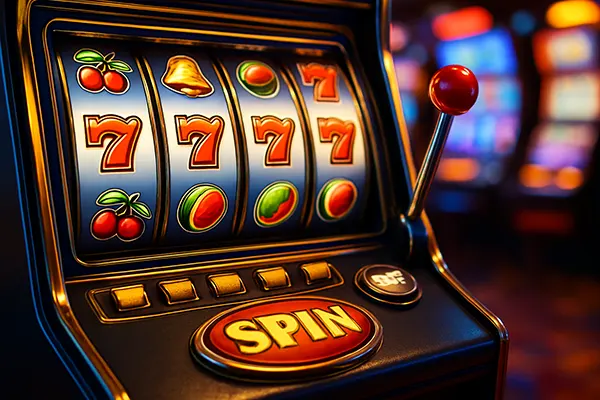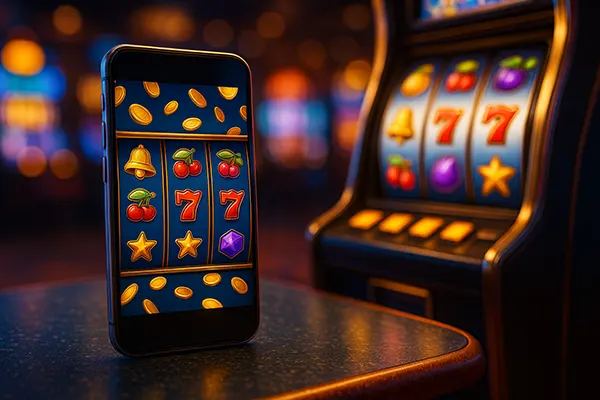
How Slot Mechanics Have Changed Over the Last 20 Years
The past two decades have transformed slot games more radically than any other period in gambling history. Once limited to simple three-reel designs and a handful of paylines, modern slots now feature immersive graphics, intricate bonus structures, and interactive elements that rival video games. Understanding how these mechanics have evolved helps to appreciate the direction in which the industry is heading and why players in 2025 encounter a very different experience compared to those in 2005.
The Shift from Classic Reels to Advanced Video Slots
In the early 2000s, the majority of slot machines remained rooted in traditional mechanics: three reels, fruit symbols, and minimal paylines. These games focused on simplicity, offering straightforward wins without additional features. By contrast, the modern landscape has embraced complex designs, where even five-reel slots are now considered standard.
The introduction of advanced video slots in the mid-2000s reshaped expectations. Developers began experimenting with themes, storylines, and enhanced soundtracks, creating experiences that engaged players beyond just spinning reels. These innovations also made it possible to introduce bonus rounds, free spins, and progressive jackpots.
Today, video slots dominate both land-based and online casinos, with developers using high-definition graphics, cinematic animations, and fully licensed themes. The once-humble slot has become a multimedia product that blends technology, art, and psychology to capture attention.
The Role of RNG and Software Advances
Behind the visual shift lies a more technical transformation. Random Number Generator (RNG) technology became the backbone of slot fairness, ensuring that every spin is independent and unpredictable. While RNGs existed before 2005, improvements in software allowed for greater stability and regulatory oversight, increasing player trust.
Modern RNGs support thousands of possible outcomes per spin, enabling developers to design games with more paylines, cascading reels, and bonus mechanics without sacrificing fairness. This flexibility opened the door to features like Megaways, where reels dynamically change the number of symbols with each spin, creating hundreds of thousands of potential combinations.
By 2025, advances in cryptographic RNGs and third-party audits have reinforced reliability. Transparency tools, such as published Return-to-Player (RTP) rates and provably fair mechanics, now form an essential part of the player experience.
The Emergence of Interactive and Gamified Features
Slots are no longer passive entertainment. Over the last decade, developers integrated gamification principles, turning each session into a more interactive experience. This means players can progress through levels, unlock achievements, and participate in tournaments, adding a sense of competition and accomplishment.
Interactive bonus games have become one of the defining features of modern slots. Instead of simply awarding free spins, games often allow players to make decisions, such as selecting mystery symbols, picking paths through digital adventures, or engaging in skill-like challenges. These additions have blurred the line between slot games and video gaming.
Gamification also introduced loyalty systems directly into games. Players can collect virtual items, track statistics, or earn rewards that tie into broader casino ecosystems. This has deepened engagement and retention, making slots a personalised experience rather than just chance-based entertainment.
The Influence of Mobile Gaming
Mobile technology accelerated the evolution of slot mechanics. In the early 2010s, developers adapted existing games for smartphones, but by 2020, titles were designed with mobile play in mind. This shift changed user interfaces, control schemes, and bonus designs, making them more intuitive for touchscreens.
Features such as portrait-mode gameplay, swipe-based controls, and simplified betting options became standard. The portability of mobile devices also encouraged shorter, faster game rounds, aligning with the preferences of modern players who value flexibility and convenience.
By 2025, mobile slots represent the majority of the market, with many studios prioritising mobile-first development. Seamless cross-device synchronisation ensures that progress, bonuses, and loyalty features are accessible across smartphones, tablets, and desktop systems.

The Future of Slot Mechanics Beyond 2025
Looking ahead, technology is set to push slot mechanics even further. Artificial intelligence is being used to personalise gameplay, suggesting titles and adjusting difficulty or volatility levels based on individual preferences. This does not change randomness but enhances how content is presented.
Virtual and augmented reality slots are gradually moving from niche experiments to mainstream offerings. These formats allow players to step inside immersive environments, interact with 3D elements, and engage with slots in entirely new ways. While adoption remains limited, it is growing steadily as VR hardware becomes more affordable.
Another key development is the integration of blockchain technology for transparency and ownership. Players can now encounter provably fair slots that use blockchain verification, while non-fungible tokens (NFTs) are being explored as unique rewards or in-game assets, although their long-term role remains uncertain.
Responsible Innovation and Regulation
With innovation comes responsibility. Regulators worldwide have introduced stricter rules to ensure fairness, transparency, and player protection. Mechanics such as autoplay, bonus buy features, and speed adjustments are now subject to oversight, particularly in Europe and North America.
Responsible gambling features are increasingly integrated directly into slot mechanics. These include reminders about session duration, voluntary limits on stakes, and real-time notifications when spending exceeds set thresholds. By embedding these tools into gameplay, developers contribute to safer gambling environments.
As the industry continues to innovate, balancing excitement with responsibility will remain the core challenge. The evolution of slot mechanics over the last 20 years demonstrates how technology can reshape entertainment, but the next phase must prioritise sustainable and ethical growth.
